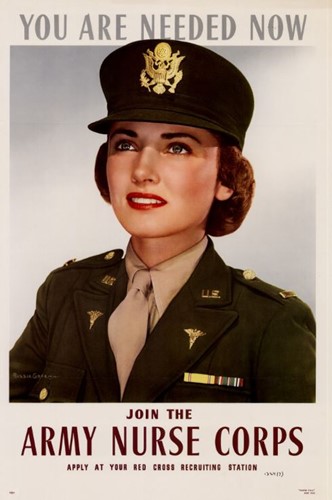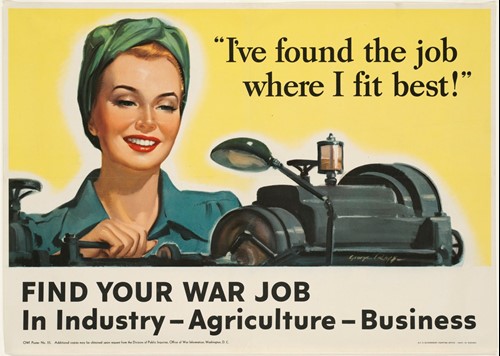Women in World War II
Museum of Florida History
 During World War II, the U.S. government encouraged women to enlist to enable more men to serve in combat. Women were also hired for jobs previously done by men as the workforce became depleted as the men went to fight.
During World War II, the U.S. government encouraged women to enlist to enable more men to serve in combat. Women were also hired for jobs previously done by men as the workforce became depleted as the men went to fight.
Native Floridian and pioneering woman aviator Jacqueline Cochran organized the Women Airforce Service Pilots (WASPs ). The WASPs were civilian pilots that ferried aircraft and helped train male pilots. Noted African American educator, Mary McLeod Bethune, lobbied President Franklin Roosevelt for the establishment of a major training facility for the newly-created Women's Army Auxiliary Corps (WAAC) at Daytona Beach during World War II. Nearly 20,000 female recruits received their training there, and the establishment of the facility produced nearly $5 million per month for the city's economy. Bethune also advocated for the inclusion of African-American women in WAAC and WAVES (Women Appointed for Voluntary Emergency Service). She fought for Black women to have more opportunities in the military and become officer candidates in WAAC, instead of being given low-skilled assignments due to their race.
On the homefront, resources including food, rubber, and nylon were scarce. Ration books authorized the purchase of limited amounts of various products per week, including sugar, coffee, meats, butter, and canned goods. Many families grew "victory gardens" to have fresh produce. The women at home made do with available resources to support their families while contributing to the war effort. Women also entered the workforce to fill the jobs vacated by the men who went to war.
African American women on the homefront helped spearhead the Double Victory Campaign, which fought for Victory over Fascism Abroad and Victory over Racism at Home. Their primary goal was to end the racial segregation of the armed forces but they also opposed segregation in housing, transportation, employment practices, and public facilies. World War II helped shine a light on the discrimnation faced by Black servicemen who had fought for freedom abroad, and Black women helped lay the groundwork for sustained civil rights activism that would carry into the next two decades.
Learn more about the WAAC, WASPs, Rosie the Riveter, and more in the World War II exhibit at the Museum of Florida History.


